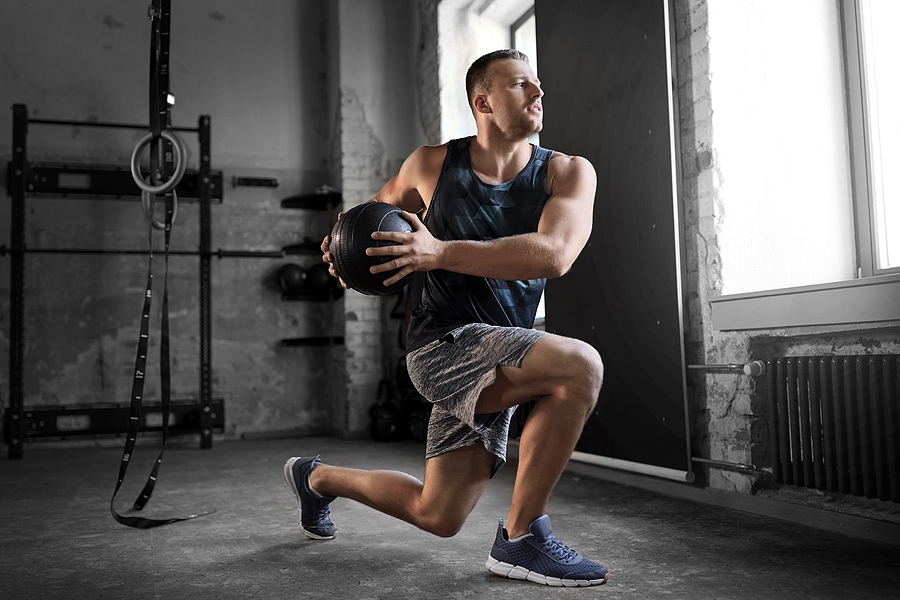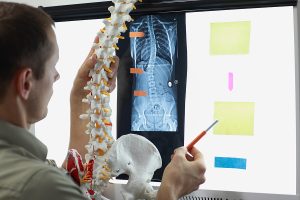Keeping your body in the best shape possible for upcoming games is everything. But, how do you pick the best healthcare provider for your needs?
When your goal is to be in good shape for a game or pre-season training, prevent future injuries, and maintain optimal health and nutrition, general medicine may not be enough. So, what is the difference between sports medicine and general medicine? How do you choose the best doctor for your needs?
Understanding the Differences Between Sports Medicine and General Medicine in Terms of Education and Training
Both sports medicine and general medicine doctors go to college. Typically, a sports medicine doctor gets a four-year degree in a science-related field to start and then applies for med school. Some colleges and universities provide a master’s degree in sports medicine.
A sports doctor’s degree focuses on the musculoskeletal system and is a sub-specialty that a doctor will focus on as their med school education continues to obtain a doctor of medicine or doctor of osteopathic medicine degree.
Once med school is completed, doctors will begin a residency. A general medicine resident is going to be supervised by a general practitioner as they work with patients. Sports medicine residents will spend some time in family medicine and their specific field, but if they lean more towards orthopedic surgery, they’ll complete a surgical residency.
After completing a residency, a new doctor can go on to complete a fellowship in fields like family practice, pediatrics, internal medicine, or emergency medicine. However, a sports medicine physician completes a fellowship specific to sports medicine. Sports medicine branches off into several specialties within that field too, such as physical therapy, orthopedic surgery, kinesiotherapy, and physiology.
After a one- or two-year fellowship, the doctor has the experience and training needed, but they still must pass a licensing exam. Doctors focusing on sports medicine also have to pass the Certificate of Added Qualifications for sports medicine.
By the time you’ve completed four years for a bachelor’s degree or six years for a master’s, four years of pre-med, a three- or five-year residency, and then a two-year fellowship. By that point, at least 13 years of expert training and education take place to become a sports medicine doctor.
General practitioners generally have to go through at least 11 years of school and hands-on training in a residency. The main difference comes down to the focus, as sports doctors are focused more on musculoskeletal than diagnosing and treating diseases and general health complaints.
When Would You Seek Sports Medicine Physicians vs. General Practitioners?
A sports medicine physician offers expert guidance when it comes to overcoming a sports-related injury, getting back onto the field after an accident, or preventing injuries during practice or a game. If you’re looking to improve your nutritional intake to have more energy or have a stronger immune system, that’s also possible with sports medicine.
Trust in sports medicine physicians to help you get back into shape and lose weight after a season off. If you need a comprehensive physical exam to play high school, college, or professional sports, sports medicine physicians are a great choice. They have the training and expertise in muscle and bone structure and the ways muscles, bones, and joints work together.
General practitioners are doctors you would see regularly for general health issues. If you haven’t been feeling great and want to know if you have the flu or something else, a general practitioner can draw blood and run tests to check. They can perform yearly preventative exams and tests like blood pressure screenings, a variety of cancer screens, and blood tests to check for health issues like diabetes, high cholesterol, and anemia.
What Services Are Offered by Fresno Sports Medicine Professionals?
When you seek care from a Fresno sports medicine professional, what medical services are available? Here’s a list of services offered at Premium SOC.
Back Pain Treatment
Lower back pain is one of the leading types of pain that gets people to go see a doctor. It affects your movements, ability to focus on the field or at work, and impacts as many as four out of five people in their lifetime.
A sports doctor helps treat pain caused by injuries, sciatica, arthritis, and conditions like degenerative disc disease. Using methods like massage, stem cell injections, and PRP, the pain eases and gets you back up and active.
EMS Training
EMS stands for electrical muscle stimulation. It’s a therapy where small electrical pulses help muscles contract more during a movement. While this is something your brain does, it helps send extra messages to the muscle fibers to target and strengthen muscles faster and in a targeted manner.
With EMS training, you put on a suit that is fit to help you exercise effectively. That suit has small electrodes that send pulses to the muscles as you work out in that suit. Muscles contract more, which helps strengthen the muscles
IV Drip Therapy
When you get struck down by a cold, COVID, or the flu, it can take time to bounce back. IV drip therapy gives your immune system a boost of essential vitamins, nutrients, amino acids, and minerals. IV drips also help support the healing of muscles and cells after an injury.
Medical Weight Loss & Fitness Programs
Losing weight is difficult as many factors can go into the reason why you gained weight in the first place. For some, it has an emotional aspect, but it can also be medical. Figuring out what is going to help you lose weight is important.
A sports medicine doctor can look into the three areas that will help with weight loss.
- Behavioral changes
- Targeted exercise programs
- Weight loss treatment
Sometimes, electrical muscle stimulation (EMS) workouts help with muscle gain and fat loss. With EMS, electrical pulses are used to strengthen weak muscles. Cryotherapy is a treatment option where your body is exposed to cold in order to boost your metabolic rate for more effective calorie burning. After a workout, water massage helps keep the muscles from stiffening back up or being so sore that you question if you’ll be able to continue.
Orthopedic & Sports Injury Treatment
Some of the most common sports injuries include stress and compression fractures, hernias, strains and sprains, dislocations, and torn rotator cuffs. These injuries must be diagnosed correctly and treated with expert care to prevent re-injury.
PRP Injections
Platelet-rich plasma (PRP) injections are a treatment where red blood cells are separated from whole blood. The remaining platelets release proteins that help boost tissue healing and regeneration. When PRP is injected into targeted areas, tears and damage heal faster while reducing inflammation. It provides fast, effective relief of sports injuries like tennis elbow, rotator cuff tears, and torn or sprained ligaments.
Shoulder, Knee, & Ankle Pain Treatment
One out of three Americans experience daily joint pain, and they use over-the-counter pills, creams, and patches to try to manage that pain. Sometimes, the pain is so severe that they opt for surgery. Sports medicine can help find less invasive ways to ease joint pain.
Stem Cell Therapy
Finally, ask about stem cell therapy to help muscles and cells in your joints, tendons, and ligaments heal faster. You’ll get injections of stem cells for faster and more efficient healing of damaged cells and tissue. It’s a minimally invasive procedure using a thin needle, so most people don’t feel much more than a quick sting.
Scheduling an appointment with Fresno’s Premium SOC is simple. Call (559) 412-2535 or fill out the Contact Us form to learn more. If you know what you need, click “Book an Appointment Now” to be taken directly to the online scheduler.







